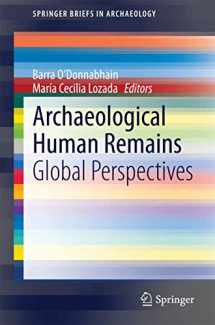
Archaeological Human Remains: Global Perspectives (SpringerBriefs in Archaeology)
ISBN-13:
9783319063690
ISBN-10:
3319063693
Edition:
2014
Author:
María Cecilia Lozada, Barra O’Donnabhain
Publication date:
2014
Publisher:
Springer
Format:
Paperback
262 pages
FREE US shipping
Book details
ISBN-13:
9783319063690
ISBN-10:
3319063693
Edition:
2014
Author:
María Cecilia Lozada, Barra O’Donnabhain
Publication date:
2014
Publisher:
Springer
Format:
Paperback
262 pages
Summary
Archaeological Human Remains: Global Perspectives (SpringerBriefs in Archaeology) (ISBN-13: 9783319063690 and ISBN-10: 3319063693), written by authors
María Cecilia Lozada, Barra O’Donnabhain, was published by Springer in 2014.
With an overall rating of 3.6 stars, it's a notable title among other
books. You can easily purchase or rent Archaeological Human Remains: Global Perspectives (SpringerBriefs in Archaeology) (Paperback) from BooksRun,
along with many other new and used
books
and textbooks.
And, if you're looking to sell your copy, our current buyback offer is $0.3.
Description
This volume addresses the directions that studies of archaeological human remains have taken in a number of different countries, where attitudes range from widespread support to prohibition. Overlooked in many previous publications, this diversity in attitudes is examined through a variety of lenses, including academic origins, national identities, supporting institutions, archaeological context and globalization. The volume situates this diversity of attitudes by examining past and current tendencies in studies of archaeologically-retrieved human remains across a range of geopolitical settings. In a context where methodological approaches have been increasingly standardized in recent decades, the volume poses the question if this standardization has led to a convergence in approaches to archaeological human remains or if significant differences remain between practitioners in different countries. The volume also explores the future trajectories of the study of skeletal remains in the different jurisdictions under scrutiny.


We would LOVE it if you could help us and other readers by reviewing the book
Book review

Congratulations! We have received your book review.
{user}
{createdAt}
by {truncated_author}


